The Astrology of Poison Hemlock

I recently went on a guided nature walk, and one of the plants our guide pointed out was the lovely, but dangerous, Poison Hemlock (Conium maculatum). As the guide (a professional botanist) described the features of this impressive plant, many astrological connotations arose in my mind. When I got home, I had to follow up with further research. My findings have been exciting!
Conium maculatum is a biennial plant that grows prolifically in many places around the world, preferring to be close to a body of water, such as a lake or stream. It is one of the most toxic plants known to humans, with even small amounts strong enough to kill. The toxicity is strongest in the roots and seeds, but the leaves and stems are plenty dangerous as well.

In the astrological literature, Hemlock was usually given rulership by Saturn.[1] The ancients probably placed it there because a) the malefics rule "things that harm us in general," and b) because the effects of hemlock cause paralysis, and Saturn rules stupor and lack of movement. Culpeper stated that Hemlock is helpful for curing priaprism... and... well... I suppose deadly poison is one surefire way to get rid of an erection that lasts too long... He didn't state it directly, but my guess is that his reasoning was that there's no planet that's quite as much a "boner killer" as Saturn. Despite that, after what I have learned about this plant, I think there is a good case to be made for Mercury actually being the ruler of Hemlock. [2]
Why would a poisonous plant be given to Mercury, not to one of the malefics? All planetary domains include a wide range of items, from tonics to poisons. Just because something is harmful to humans does not necessarily mean it should be ruled by a malefic (except in the broadest sense). For example, Saturn is a malefic, but it rules Mullein, which is an extremely helpful tonic herb. And Venus rules "poison in general," even though she is a benefic. Every planet has a light and a dark side. Hemlock being poisonous is not a good enough reason to give it immediately to Saturn. I think Mercury is a better fit. Let me make my case!
Mercury rules multiplicity, and this is reflected in Hemlock's features
One of Mercury's functions is to split, splay, divide, and diverge. In the human body, Mercury rules the hands, which split off into fingers. Mercury also rules the nerves, which are branched in shape and split prolifically. The Hemlock plant displays this "splitting" property quite thoroughly.
Hemlock leaves split multiple times.
If you recall your botany lessons from primary school, you may remember that leaves can either be simple or compound in structure:
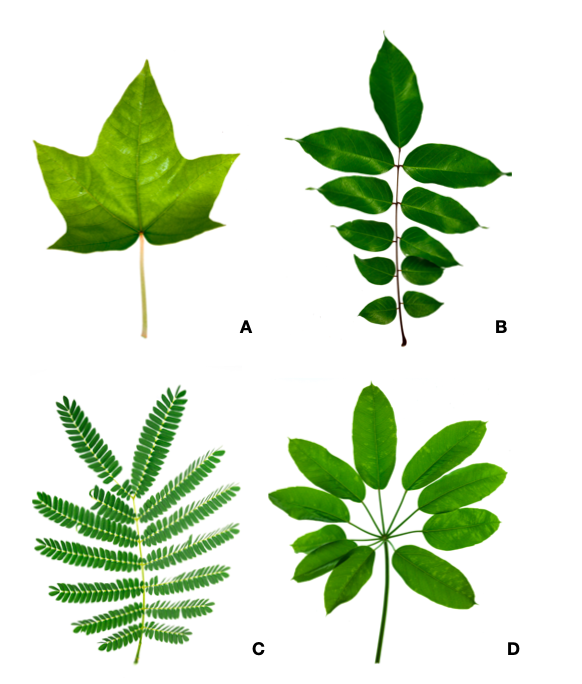
The Hemlock leaf is compound... to the max! This is one leaf:
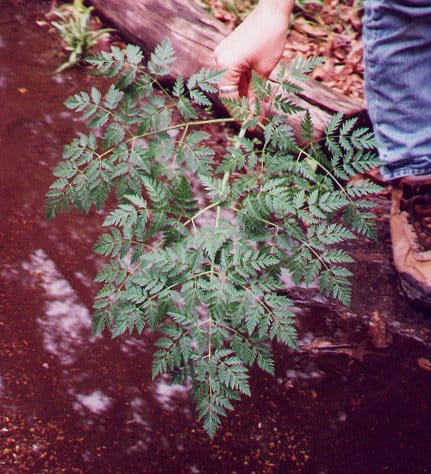
In botanist terms, a mature hemlock leaf is "4-times pinnately compound," meaning that a single leaf splits into sub-leaflets four times! Compound leaves are common in nature, but to be pinnately compound four times is fairly uncommon for a leaf structure. It's a lot of mercurial multiplicity! To see what I mean, follow the stems below:
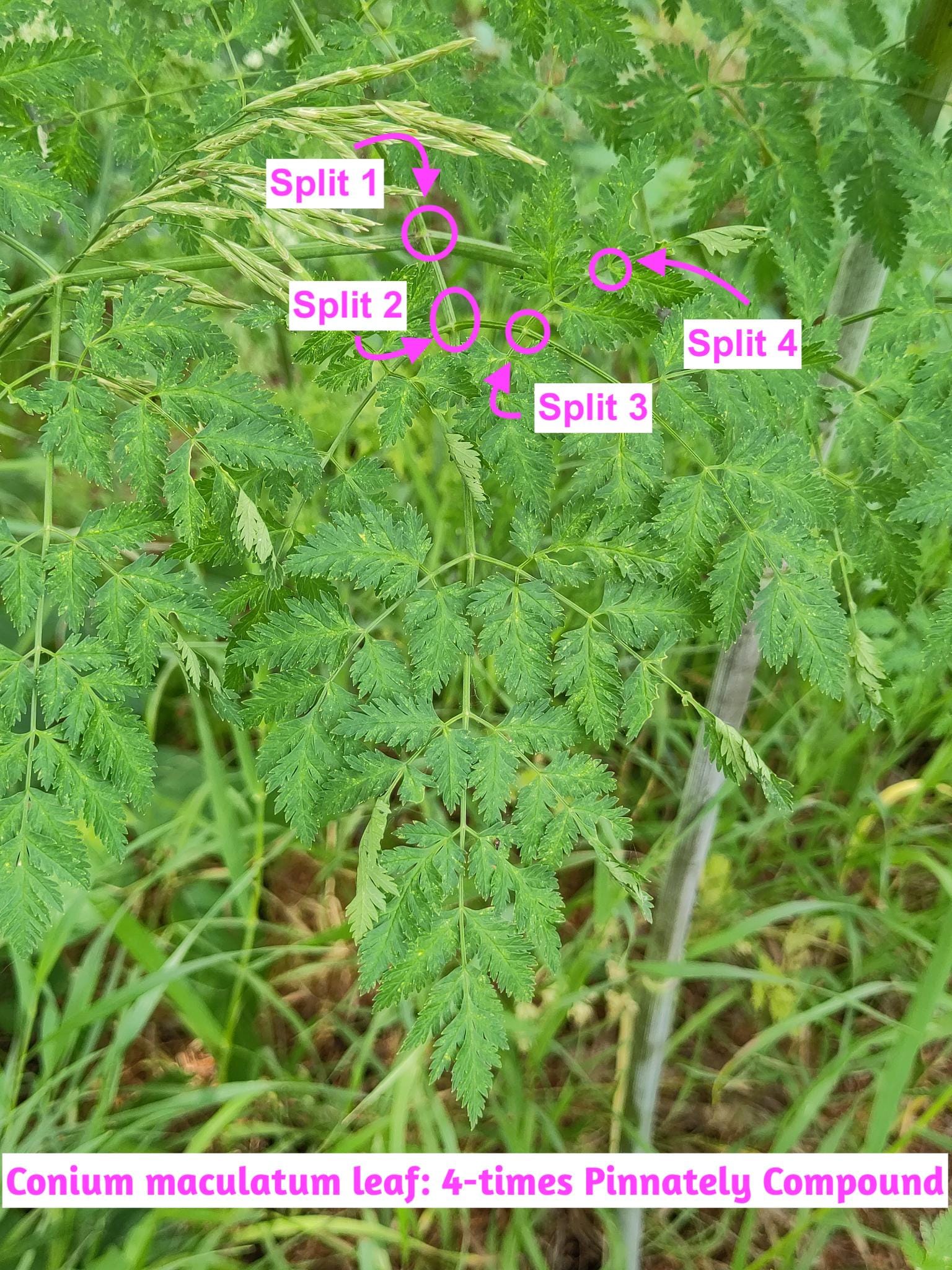
Hemlock flower umbrels also split multiple times
See if you can see the multiple splits contained in the flower structure:
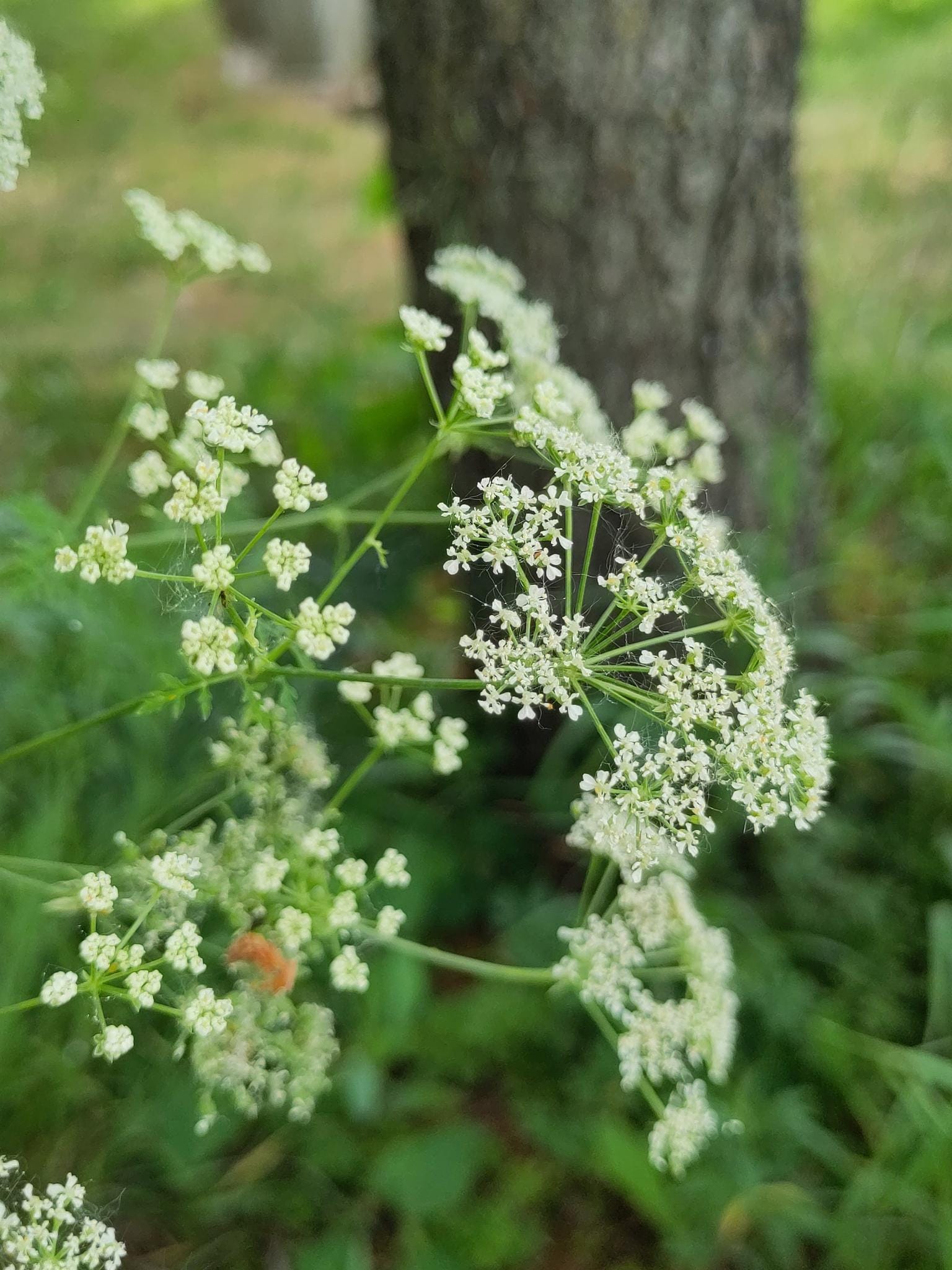
The main center stem, and even the roots are chambered!
The divisive quality of Hemlock can also be seen in the way that the stems are chambered... divided into several hollow segments. And the root has the same nature.
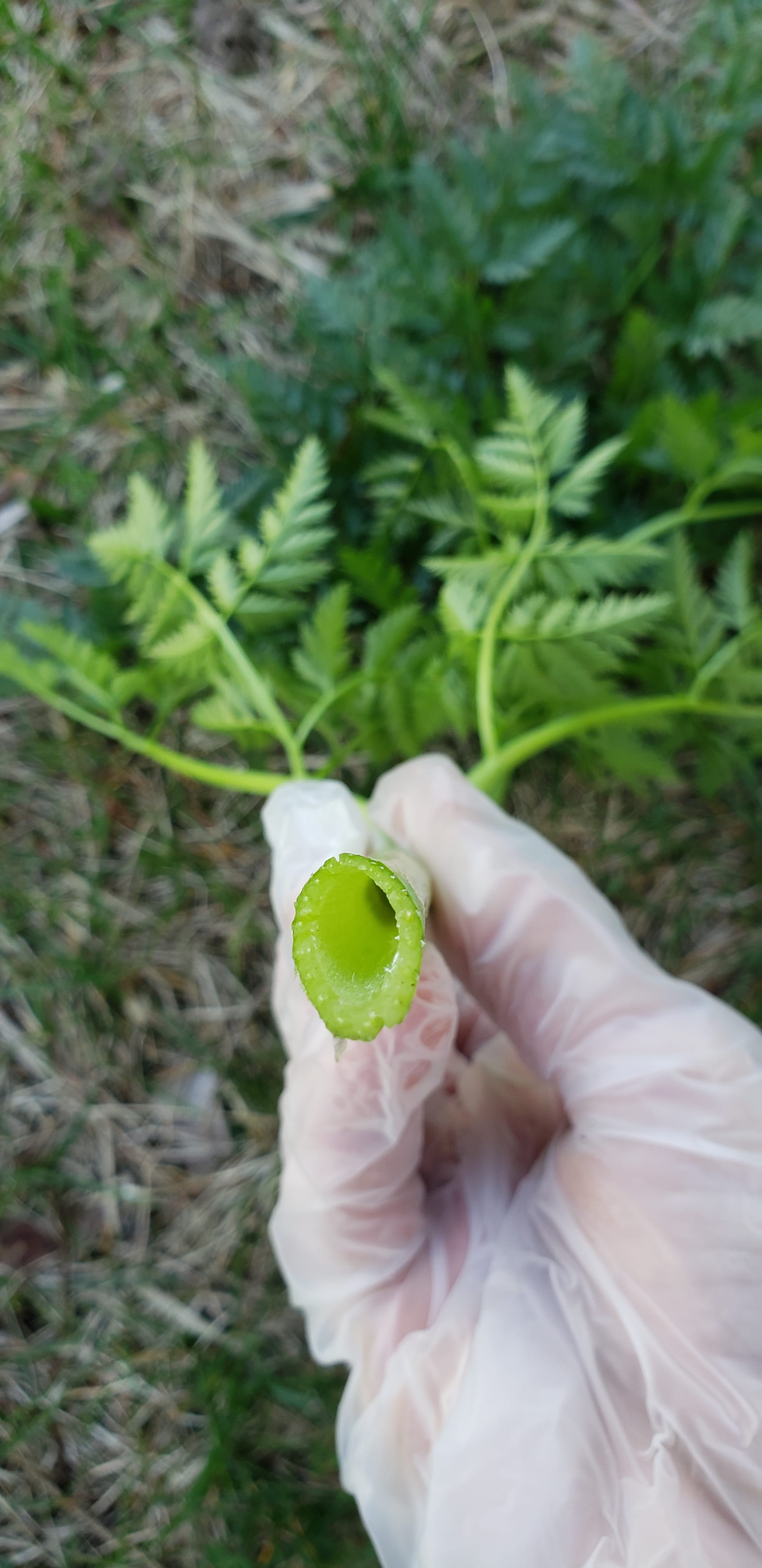
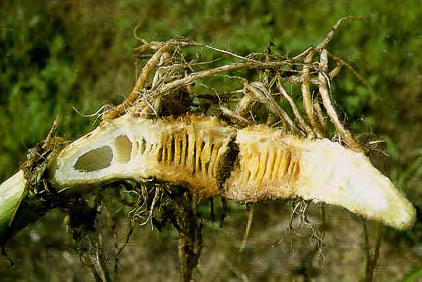
Hemlock is mottled— a Mercurial marker
One way to identify Conium maculatum is by the purple blotches on its stems.
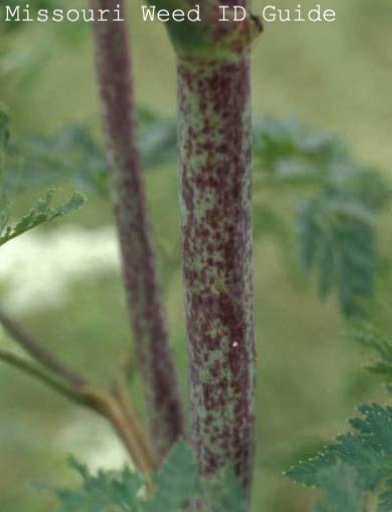
Astrologers, when assigning colors to planets, often state that Mercury rules "mixed" colors. Anything that has multiple, mottled colors could be said to be mercurial.
Hemlock is tall and lanky
When using astrology to describe people, Mercury is said to impart tallness and thinness. Lilly describes Mercury's influence on the body, saying that it:
...denotes one of an high stature and straight thin spare body, an high forehead and somewhat narrow long face, long nose; ... long arms, fingers and hands.
We could apply the plant version of this description to tall, thin plants like Hemlock. Behold, one plant on its own, how "lanky" it is:


Hemlock's chemical constituents are strongest during Gemini season
Hemlock is currently in flower, and this is the time of year when the plant produces the highest amount of its most potent alkaloids. (We are currently in Gemini season, and Mercury rules Gemini.)
Hemlock's toxicity travels through the nervous system
There are several toxic chemicals that make Hemlock poisonous, but the primary one is an alkaloid called coniine. Coniine travels along the peripheral nervous system, rapidly and harshly depolarizing nerves as it goes along. The depolarization effect is so strong, nerves are unable to regain function.
As mentioned before, Mercury rules the nerves. Hemlock seems to have an affinity for them.
Hemlock is primarily antagonistic to the lungs
Depolarizing the nerves isn't what actually kills you, though. (Believe it or not, you don't die from a flaccid penis, either. Don't listen to anyone whining otherwise.) Death arrives because the nerves around the lungs become paralyzed, making you no longer able to breathe. You will suffocate to death, due to lack of oxygen. The sad thing is, because the poison doesn't affect the central nervous system, you will probably be aware the whole time. It is an awful death. ☹️
(Despite knowing about this poison for millennia, we humans have still been unable to develop an antidote to this poison. Culpeper said that hemlock poisoning could be treated by drinking large amounts of "very pure" alcohol. I wouldn't try that at home! If someone can get to a hospital, the only treatment is to put the victim on a ventilator. Some people have survived by remaining on a ventilator until the poison leaves their system, which takes 2-3 days!)
In my last post, I described how Jupiter and Mercury form a polarity. In polar relationships, the two poles are antagonistic of each other, even while needing each other. In astro-herbalism, much is made of this principle. When treating an illness of a certain nature, we look for herbs of the opposite nature. This is called "treatment by antipathy." (There is also "treatment by sympathy," a different principle to be discussed another time.) This principle can also work in reverse: plants can kill by antipathy. This is one such case. Hemlock, a plant of Mercury, attacks the lungs, an organ of the body ruled by Jupiter.
Hemlock has a historical association with killing philosophers
Speaking of Jupiter... there's no discussion about Hemlock that can pass without recalling its most notorious story: the execution of Socrates the philosopher. Jupiter rules philosophy, and Mercury's antagonism towards the Jupiterian domain would also apply to pesky youth-corrupters. Socrates was forced to drink a beverage of Poison Hemlock as punishment for his "impiety."
That Hemlock has remained associated with this story, as the killer of the world's most famous philosopher, is just the final confirmation for me that Hemlock is decidedly Mercury's poison!
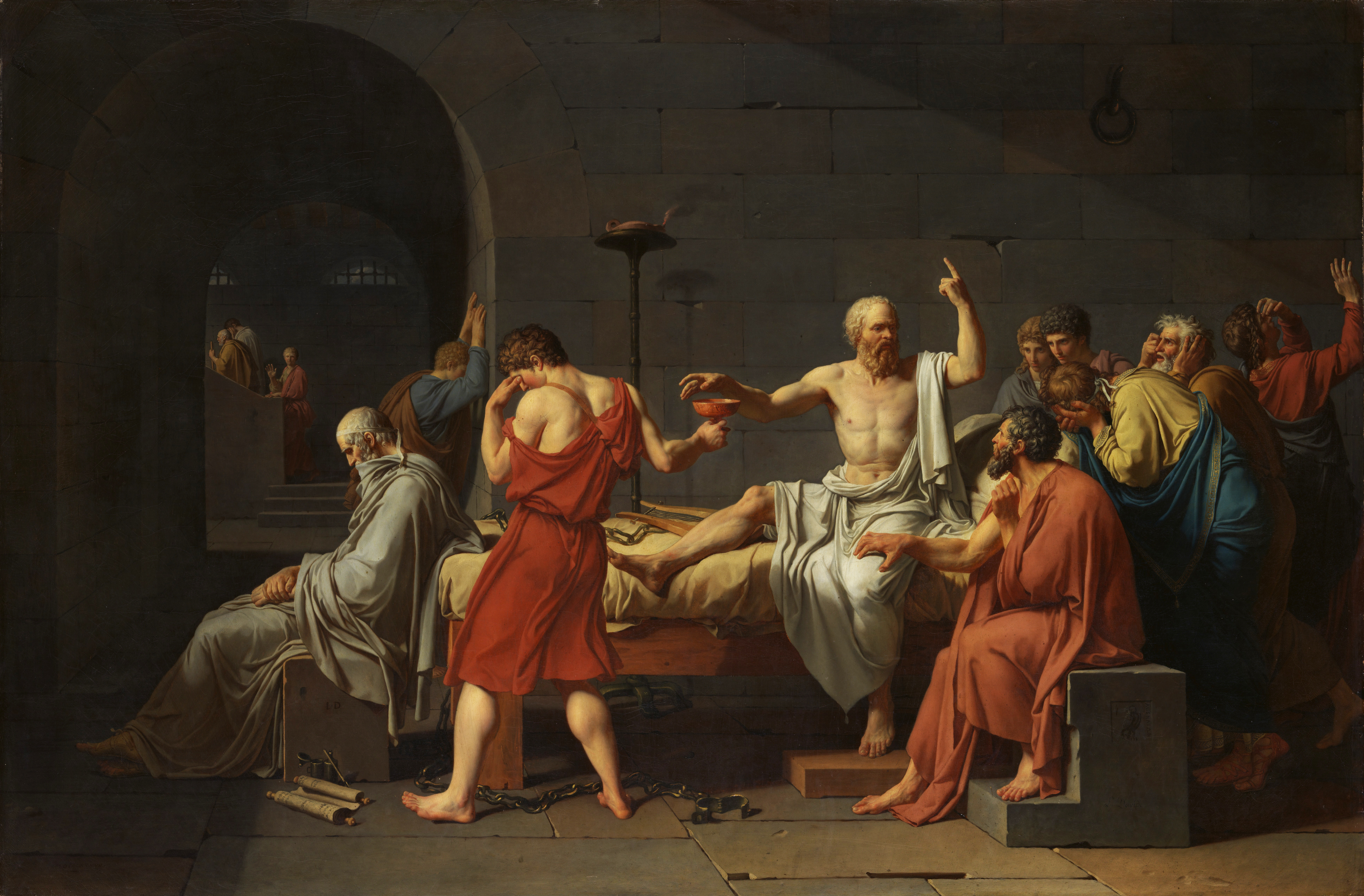
By Jacques-Louis David - https://www.metmuseum.org/collection/the-collection-online/search/436105, Public Domain, Link
This weekend's Full Moon occurs in Sagittarius, with the Sun in Gemini, highlighting the polarity between Jupiter and Mercury. It's the perfect time to talk about this topic.
Did I convince you? Let me know!




